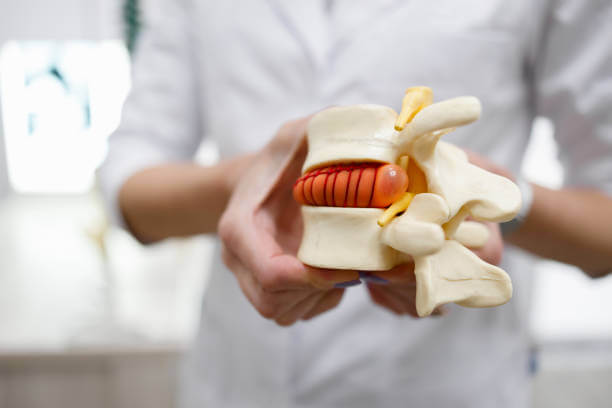
Back pain is one of the most common health challenges in the world, and for many people, degenerative disc disease is the root cause. For decades, spinal fusion was the standard surgical solution for severe cases. While fusion can stabilize the spine, it often limits mobility and may place added strain on surrounding discs. Today, however, artificial disc replacement (ADR) technology is transforming outcomes for patients, offering pain relief while preserving natural movement. Recent advances in this field have made the procedure more effective, less invasive, and longer lasting than ever before.
Improved Materials for Longevity
One of the most exciting developments in ADR is the use of advanced biomaterials. Traditional artificial discs often used metal and medical-grade plastics, which were functional but sometimes wore down over time. Newer designs incorporate materials like ceramic composites and titanium alloys combined with high-performance polymers. These innovations allow the artificial disc to better mimic the natural cushioning of a healthy spinal disc, while also resisting wear and tear. As a result, patients can expect their replacement discs to last longer, reducing the need for revision surgeries.
Minimally Invasive Surgical Techniques
Surgical advances have also played a crucial role in making ADR safer and more accessible. Surgeons now use smaller incisions and refined instruments, which minimize damage to surrounding tissues and speed up recovery. Image-guided navigation systems and robotic-assisted tools further increase precision, allowing the artificial disc to be placed with millimeter-level accuracy. For patients, this means less post-operative pain, reduced scarring, and faster return to normal activity.
Customization for Individual Patients
Every spine is different, and recent technological breakthroughs acknowledge this fact. Instead of a one-size-fits-all implant, modern ADR solutions come in a variety of sizes and designs tailored to the patient’s anatomy. Some systems even use pre-surgical imaging and 3D modeling to create custom-fit implants. This personalization improves alignment, stability, and overall function, leading to better outcomes and a more natural feel for patients.
Motion Preservation and Beyond
Unlike spinal fusion, which eliminates motion in the affected segment, ADR is designed to maintain or even restore natural mobility. Newer implants are engineered to replicate the complex motion of a healthy disc, including flexion, extension, and rotation. This not only improves quality of life but also reduces the risk of adjacent disc degeneration, a common complication of spinal fusion.
The Future of ADR
Looking ahead, researchers are exploring bioengineered discs that incorporate regenerative materials to promote natural tissue healing. Early studies suggest that hybrid designs—combining mechanical support with biological growth factors—could one day allow the body to repair itself while still providing stability.
Artificial disc replacement is no longer considered an experimental option but a proven, reliable solution for patients with severe disc problems. Leaders in the field, such as Dr. Lanman, continue to pioneer innovative techniques and push the boundaries of what is possible. With ongoing advancements in materials, surgical precision, and patient-specific design, ADR is poised to redefine spinal care for the next generation.
